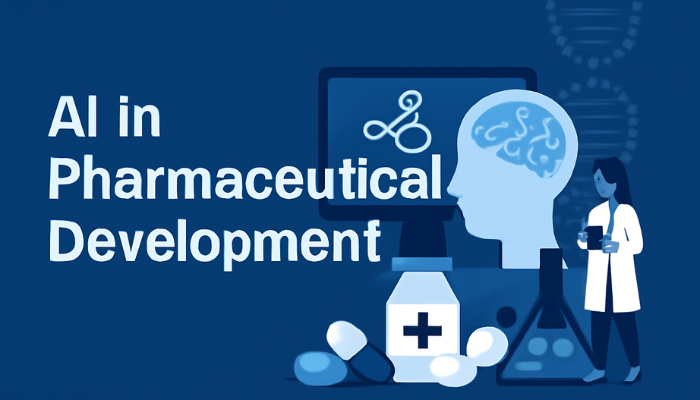Supply chains are more complex than ever, with global disruptions, fluctuating demand, and rising customer expectations pushing traditional systems to their limits. While dashboards, demand forecasts, and workflow automation are common tools, they often break down when exceptions become the norm.
This is where Agentic AI comes in. Unlike traditional predictive models that require constant human input, agentic AI systems are autonomous, goal-driven, and context-aware. These intelligent agents don’t just analyze data, they act. Whether it’s rerouting a shipment due to a weather delay or renegotiating vendor contracts, agentic AI adapts in real-time and makes decisions with minimal supervision.
The shift is already underway. Gartner predicts that by 2030, half of all supply chain management solutions will include intelligent agents that autonomously take action.
Agentic AI offers businesses a more dynamic, responsive approach to managing supply chains, enabling them to adjust quickly to changes, minimize disruptions, and make smarter decisions at scale.
In this blog, we’ll dive into how agentic AI works, where it’s being applied, and how you can implement it to enhance operational efficiency and support long-term growth.
What Is Agentic AI and How It Works in the Supply Chain
Agentic AI systems are autonomous digital agents that sense data, make decisions based on real-time context, and take proactive actions to meet business goals. For instance, if a sudden demand spike is detected, an agentic AI system might automatically adjust inventory levels, reroute shipments, and renegotiate supplier contracts, all without human intervention.
The Sense, Plan, Act, Learn Loop
At the heart of every agentic AI system lies a closed feedback loop:
- Sense: The agent gathers data from internal systems (ERP, inventory, CRM) and external signals (weather APIs, shipment trackers, market prices).
- Plan: It evaluates potential strategies to meet its goals, taking into account real-time constraints and historical outcomes.
- Act: It executes decisions through integrations, rerouting shipments, adjusting purchase orders, or modifying production schedules.
- Learn: It updates its models based on the outcome of actions, improving performance over time.
This loop makes the system responsive, self-improving, and aligned with evolving supply chain conditions.
Agentic AI vs. Traditional AI in Supply Chains
Most current supply chain AI systems are reactive and analytical. They forecast demand, flag anomalies, or optimize routes, but they don’t take initiative. A traditional system may predict a supplier delay. In contrast, an agentic AI system will proactively contact alternative vendors. It will also simulate cost impacts and adjust procurement flows, without any manual intervention.
Here’s a quick comparison:
| Capability | Traditional AI | Agentic AI |
| Role | Predictive or descriptive | Proactive and goal-driven |
| Human Involvement | High (decision left to users) | Low (autonomous decision execution) |
| Adaptability | Limited | High (responds to real-time context) |
| Learning | Offline model training | Continuous, online learning |
| Integration Complexity | Narrow, use-case specific | Broad, multi-system interactions |
Want a deeper dive into agent-based intelligence?
Read: A Comprehensive Guide to AI Agents
Core Capabilities of Agentic AI in Supply Chains
For supply chain use, agentic systems are built around four pillars:
- Autonomy: The agent operates independently, without requiring constant user oversight.
- Goal-Directedness: It acts with a specific business objective in mind, such as minimizing shipping delays or maximizing on-time delivery rates.
- Context-Awareness: The agent understands its environment by continuously reading data from IoT sensors, APIs, and internal systems.
- Adaptability: It adjusts its strategies when conditions change, using reinforcement learning or planning algorithms.
These characteristics make agentic AI supply chain systems ideal for volatile, interconnected operations where decisions must be made continuously.
Struggling with fragmented supply chain systems?
Codewave helps unify data across ERP, logistics, and IoT layers to support intelligent agent actions without requiring a full-stack overhaul.
Single-Agent vs. Multi-Agent Architectures
There are two primary design patterns when applying agentic AI in supply chains:
- Single-Agent Systems: These are centralized agents managing a specific domain, such as inventory optimization at a warehouse or pricing adjustments in procurement. They work well in isolated use cases or pilot implementations.
- Multi-Agent Systems (MAS): These involve multiple agents, each responsible for a node in the supply chain (supplier, warehouse, logistics hub), that collaborate or negotiate to achieve global outcomes. MAS are powerful for modeling supply chains as decentralized, interdependent networks. For example, if one logistics agent predicts a delay, others can re-plan their routes, update stakeholders, or trigger preventive actions in parallel.
This layered architecture enables local decision-making while maintaining global alignment with business goals.
Key Supply Chain Domains Being Transformed by Agentic AI
Agentic AI is reshaping supply chains by embedding autonomous, intelligent agents into core operational domains. These agents don’t just analyze data. They act on it, anticipate disruptions, and coordinate across systems and teams. Here’s a closer look at how this transformation unfolds across key areas of the supply chain:
1. Autonomous Inventory Replenishment
Traditional replenishment systems often rely on static rules that cannot respond to unexpected shifts in demand. With agentic AI, replenishment decisions are adjusted in real-time based on live data, such as market trends, weather conditions, or supply disruptions. This results in faster, more accurate stock replenishment and reduced risk of stockouts.
- Real-time demand sensing: Agents continuously monitor point-of-sale systems, ecommerce platforms, market trends, and external signals (like weather or events) to anticipate shifts in demand with high accuracy.
- Supplier coordination: When stock levels dip or a spike in demand is predicted, the agent can automatically initiate purchase orders, prioritize preferred suppliers based on delivery performance, and reroute shipments if delays are detected.
- Dynamic safety stock adjustment: Instead of fixed safety stock rules, agents recalculate buffer levels daily, taking into account lead times, demand volatility, and current supplier reliability.
This leads to lower inventory holding costs, fewer stockouts, and faster response to demand shifts.
2. Logistics and Route Optimization
Agentic systems in logistics extend beyond route planning. They continuously adapt to real-time changes in transportation conditions and delivery constraints.
- Multi-modal routing: Agents analyze live traffic, weather disruptions, vehicle availability, and capacity constraints to dynamically select the optimal mix of transport modes (road, rail, sea, air).
- Last-mile delivery coordination: Agents assigned to delivery hubs or driver fleets can rebalance routes mid-day, reschedule drop-offs, and even interface with customers to adjust delivery windows in real time.
These adjustments help improve delivery accuracy, reduce fuel costs, and maintain customer satisfaction even under unpredictable conditions.
Also Read: Using AI to Optimize Inventory and Logistics Planning
Learn how real-time intelligence and agent coordination are changing the way companies manage warehouse space, fulfillment speed, and transportation costs.
3. Procurement Intelligence
In procurement, agentic AI acts like a virtual sourcing strategist. It doesn’t just recommend vendors, it actively engages with the procurement lifecycle.
- Supplier negotiation: Intelligent agents analyze past pricing data, payment terms, vendor lead times, and current market conditions. They can trigger renegotiation requests or flag when a better offer is available elsewhere.
- Contract renewal triggers: When a supplier contract is nearing expiration or performance KPIs start to degrade, agents can initiate renewal evaluations or suggest alternative vendors preemptively.
This improves cost efficiency, reduces reliance on manual sourcing cycles, and builds resilience into procurement strategy.
4. Smart Manufacturing and Maintenance
Manufacturing operations benefit from agentic systems that can both plan production and anticipate disruptions before they occur.
- Schedule optimization: Planning agents balance machine availability, workforce constraints, and delivery deadlines. If a critical machine goes offline or material delay is reported, schedules are re-optimized without human intervention.
- Predictive maintenance: Agents monitor machine data in real time, flag early signs of wear, and schedule preventive maintenance at times that least affect throughput.
This minimizes downtime, boosts equipment lifespan, and ensures smoother production flows.
5. Compliance and Risk Monitoring
Global supply chains face a maze of compliance obligations. Agentic AI helps navigate this complexity by actively scanning for changes and ensuring alignment.
- Tariff rule changes and trade restrictions: Agents track global trade databases and regulatory feeds. If new tariffs are introduced or a restricted goods list changes, they alert procurement or reroute logistics plans automatically.
- Carbon tracking and sustainability compliance: Agents aggregate emissions data from supply nodes and generate audit-ready reports. They can also identify partners or vendors who are not meeting ESG criteria.
By catching risks early, these systems reduce the chance of violations, delays, or reputational damage.
Technology Stack: What You Need to Build Agentic Supply Chain Systems
Building agentic AI into your supply chain takes more than just adding a model. You need a full tech stack that lets agents sense data, make decisions, and act continuously in real time. Below are the core technology layers needed to make agentic supply chains operational:
Data Infrastructure
Agentic systems rely on live, granular data to make timely and context-aware decisions. This demands a shift from batch-based pipelines to streaming-first architectures.
- Real-time streaming platforms such as Apache Kafka or AWS Kinesis collect and route event data from sensors, logistics platforms, and transactional systems.
- Event stores preserve decision-relevant history in an append-only format. This allows agents to simulate alternative futures or replay past scenarios.
- IoT telemetry from warehouse robots, trucks, and production equipment feeds agents with operational signals in real time. This enables them to act with precision.
Decision Engines
The intelligence of agentic systems is rooted in flexible decision-making modules that can balance trade-offs, evaluate goals, and learn from outcomes.
- Reinforcement learning (RL) models allow agents to improve actions based on feedback from their environment. This is ideal for routing, bidding, or maintenance scenarios.
- Heuristic planners and graph-based solvers power decisions under constraint, such as capacity allocation or supply routing across complex networks.
These engines form the cognitive core of each agent, enabling them to weigh options and act toward business-defined objectives.
Agent Orchestration Frameworks
Managing multiple agents, each with its own role, context, and autonomy, requires robust orchestration.
- LangChain and AutoGen support task chaining and inter-agent communication in systems that need flexible reasoning workflows.
- Custom micro-agent architectures let you deploy purpose-built agents tailored to domains like warehousing, procurement, or last-mile logistics.
These orchestration tools allow you to coordinate multiple agents with clarity, scalability, and domain separation.
Integration Layer
For agents to take meaningful action, they must interface with the systems already running your operations.
- Connectors to ERP platforms, warehouse management systems, and fleet logistics tools provide the actuators for agent decisions. This includes adjusting a purchase order, rescheduling a delivery, or modifying a production line.
Well-structured APIs and messaging protocols are essential here. They allow agents to move from recommendation to execution seamlessly.
Monitoring and Guardrails
Autonomous agents need boundaries. Oversight frameworks ensure accountability, safety, and trust in decision outputs.
- Human-in-the-loop configurations allow business teams to approve, override, or receive justifications for critical decisions before execution.
- Observability tools track agent activity, system interactions, and performance metrics to ensure agents remain aligned with goals.
- Feedback loops enable the system to adapt based on results, failure signals, or operator input. This closes the loop for continual improvement.
Together, these technologies provide the foundation for turning agentic AI from a research concept into an operational advantage. When architectured correctly, they allow your supply chain to sense, decide, and adapt faster than competitors while preserving reliability and control.
Want help designing your agentic architecture?
We’ve deployed LangChain-based planners, custom micro-agents, and real-time IoT integrations for global logistics clients.
Implementation Strategy: Embedding Agentic AI Into Your Supply Chain Stack
Deploying agentic AI into your supply chain requires more than just plugging in a model. It calls for thoughtful design, cross-functional coordination, and an iterative rollout process. Here’s a practical roadmap to move from experimentation to operational deployment:
1. Identify Decision-Heavy Workflows
Start by mapping out areas in your supply chain where decisions are frequent, repetitive, and time-sensitive. These could include dynamic route scheduling, order prioritization, procurement timing, or maintenance alerts. Focus on processes that currently rely on rules or manual inputs and show measurable impact when improved.
2. Define Agent Goals and KPIs
Each agent should operate with a clear objective that aligns with business outcomes. For instance, a replenishment agent might be tasked with maintaining 98 percent product availability while minimizing carrying costs. Define KPIs such as order cycle time, on-time delivery rate, or supplier response time, and use these to measure agent performance in production.
3. Create Sandbox Environments for Iteration
Before pushing agents into production, test them in simulated or shadow environments. Simulations help validate behavior under uncertainty, expose edge cases, and calibrate agent actions safely. Use historical data and digital twins of supply chain nodes to create realistic conditions for scenario-based testing.
4. Move From Assisted to Autonomous Mode
Begin deployment with a human-in-the-loop structure where agents make recommendations but final execution remains manual. This allows business teams to build trust, review agent reasoning, and calibrate thresholds. Once agents consistently perform within expected parameters, gradually shift them to fully autonomous execution in low-risk segments.
5. Build in Governance and Override Controls
Autonomy must be paired with oversight. Implement audit trails, exception reporting, and role-based access to override agent actions when needed. Create escalation paths and fail-safes for decisions that cross risk thresholds, such as unplanned vendor switches or logistics rerouting that affects SLA commitments.
6. Codewave’s Modular Deployment Approach
At Codewave, we guide clients through agentic AI adoption using an incremental strategy that balances speed with system integrity:
- Start small: We deploy a single agent or micro-agent system focused on a narrow, high-value domain like inventory planning or supplier renegotiation.
- Use modular builds: Each agent is designed as a standalone service that integrates with existing tools via APIs. This avoids overhauling your full tech stack.
- Scale through layering: As trust and value build, we layer in additional agents and extend orchestration across nodes in the supply chain.
This phased, agile model ensures that agentic systems deliver measurable outcomes without disrupting core operations.
Curious where this is all headed?
Read: 2025 Agentic AI Trends & Predictions
Business Impact and ROI Metrics to Expect
The shift to agentic AI is not just a technological upgrade. It’s a business performance lever that directly affects operational efficiency, service quality, and bottom-line results. Once implemented correctly, agentic systems quickly demonstrate measurable impact across key supply chain metrics.
1. Shorter Lead Times and Fewer Stockouts
By enabling continuous decision-making and real-time adjustments, agentic AI reduces lags between demand shifts and response. This leads to shorter order-to-fulfillment cycles and more consistent inventory availability. Businesses adopting autonomous replenishment agents often see a measurable drop in out-of-stock events without overstocking.
2. Lower Operational Costs Through Optimized Decisions
Agents reduce waste, avoid last-minute freight charges, and automate procurement strategies that previously required dedicated teams. When agents dynamically choose optimal routes, negotiate better supplier terms, or minimize buffer inventory, costs decline across transportation, warehousing, and sourcing. Over time, these efficiencies compound into double-digit percentage savings.
3. Better SLA Compliance and Customer Experience
With agents monitoring and adjusting logistics and fulfillment in real time, the percentage of on-time deliveries improves. This boosts SLA compliance with retail partners and enterprise customers. The result is improved trust, fewer penalties, and stronger contractual relationships.
4. Reduced Manual Effort and Fewer Human Errors
By offloading decision-heavy, repetitive tasks to intelligent agents, your teams can focus on strategic exceptions and relationship management. This not only reduces fatigue-driven mistakes but also minimizes resolution delays for issues like stock imbalances or incorrect shipment allocations.
5. ROI Modeling Example
To evaluate agentic AI’s value, businesses can use a simple cost-benefit model. For instance:
- Annual logistics cost: $12M
- Reduction through agentic route optimization: 8%
- Annual savings: $960,000
- Agent system implementation and maintenance cost: $250,000
- Net ROI:
ROI = ((960,000 − 250,000) / 250,000) × 100 = 284%
Similar models can be built for procurement efficiency, inventory reduction, or labor reallocation.
Risks and Considerations When Deploying Agentic AI
Adopting agentic AI in supply chains offers operational speed and autonomy, but it also introduces new forms of complexity and risk that need proactive planning.
1. Data Quality and Decision Liability
Autonomous agents act based on the data they ingest. Inaccurate or incomplete data can lead to misguided decisions, especially when agents are trusted to operate without human intervention. Unlike rule-based automation, where logic is predefined, agentic systems generate actions contextually, making accountability more complex. Teams need to track not just outcomes but the data conditions and reasoning paths behind every action.
2. Security and Safety Guardrails
Agents that interact with live systems, such as transportation networks or procurement platforms, need robust guardrails to prevent unsafe or unauthorized actions. This includes identity management, API permission scopes, and incident fallback protocols. Since these agents can trigger transactions or reroute inventory flows, any breach could lead to systemic supply chain disruptions.
3. Change Management and Operator Trust
When AI starts making decisions traditionally owned by humans, even seasoned operators may resist the shift. Ensuring agent outputs are explainable and that override mechanisms are transparent is critical for user adoption. Building trust takes time and clear communication about how agents decide, not just what they do.
4. Over-Reliance and Automation Bias
Agentic systems excel at scaling operational decisions, but humans may start deferring too much authority. This creates a bias where agents are assumed to be correct even when signals suggest otherwise. To avoid blind spots, maintain periodic audits and cross-checks where humans review system decisions and flag unintended outcomes.
Deploying agentic AI requires not just engineering excellence but also strategic alignment, strong governance, and cultural readiness. The most successful implementations embed human oversight without slowing down AI-driven responsiveness.
Not sure where to begin with AI in your supply chain?
We guide clients from discovery to deployment using pilot-driven rollouts that de-risk investment and maximize ROI from day one.
Schedule a 30-Minute AI Consultation
Why Codewave for Agentic Supply Chain Solutions
Choosing the right partner to deploy agentic AI in your supply chain is as critical as the technology itself. At Codewave, we bring a unique combination of AI innovation, systems integration, and domain experience that makes us the ideal implementation partner for businesses seeking to modernize logistics, manufacturing, and operations infrastructure.
- AI Expertise with Operational Depth: We go beyond theoretical models. Our teams have implemented reinforcement learning, custom planning agents, and intelligent automation in live production environments. We specialize in building AI systems that align with business objectives and deliver consistent performance under real-world constraints.
- End-to-End Integration Capabilities: Agentic systems must work within your existing stack. Our developers and architects are deeply experienced in integrating AI agents with ERP systems, IoT platforms, fleet management tools, and data lakes. We ensure every agent can act, monitor, and adapt within your current operational ecosystem.
- Proven Experience in Supply Chain Tech: We have successfully delivered solutions in logistics optimization, warehouse telemetry, and smart manufacturing control systems. Whether it’s coordinating delivery fleets using real-time data or optimizing plant floor scheduling, our experience with industrial IoT and event-driven design helps bring agents to life in high-volume environments.
- Human-Centric, Auditable AI Design: Autonomy should not mean opacity. We build systems with full audit trails, control mechanisms, and transparent reasoning flows. Your teams always remain in control, with the ability to override decisions and understand agent actions. This ensures confidence, safety, and accountability at scale.
- Case References and Capabilities: We build Agentic AI by creating autonomous systems that make data-driven decisions and continuously improve through MLOps pipelines. Our solutions are adaptable, easy to monitor, and designed to optimize processes with minimal human intervention.
Start Your Agentic AI Journey With Confidence
Whether you’re piloting autonomous inventory planning or scaling a multi-agent logistics platform, Codewave brings the technical foundation and business fluency to guide your transformation. Let’s build your next-generation agentic AI supply chain: intelligent, adaptive, and resilient.
Codewave is a UX first design thinking & digital transformation services company, designing & engineering innovative mobile apps, cloud, & edge solutions.







